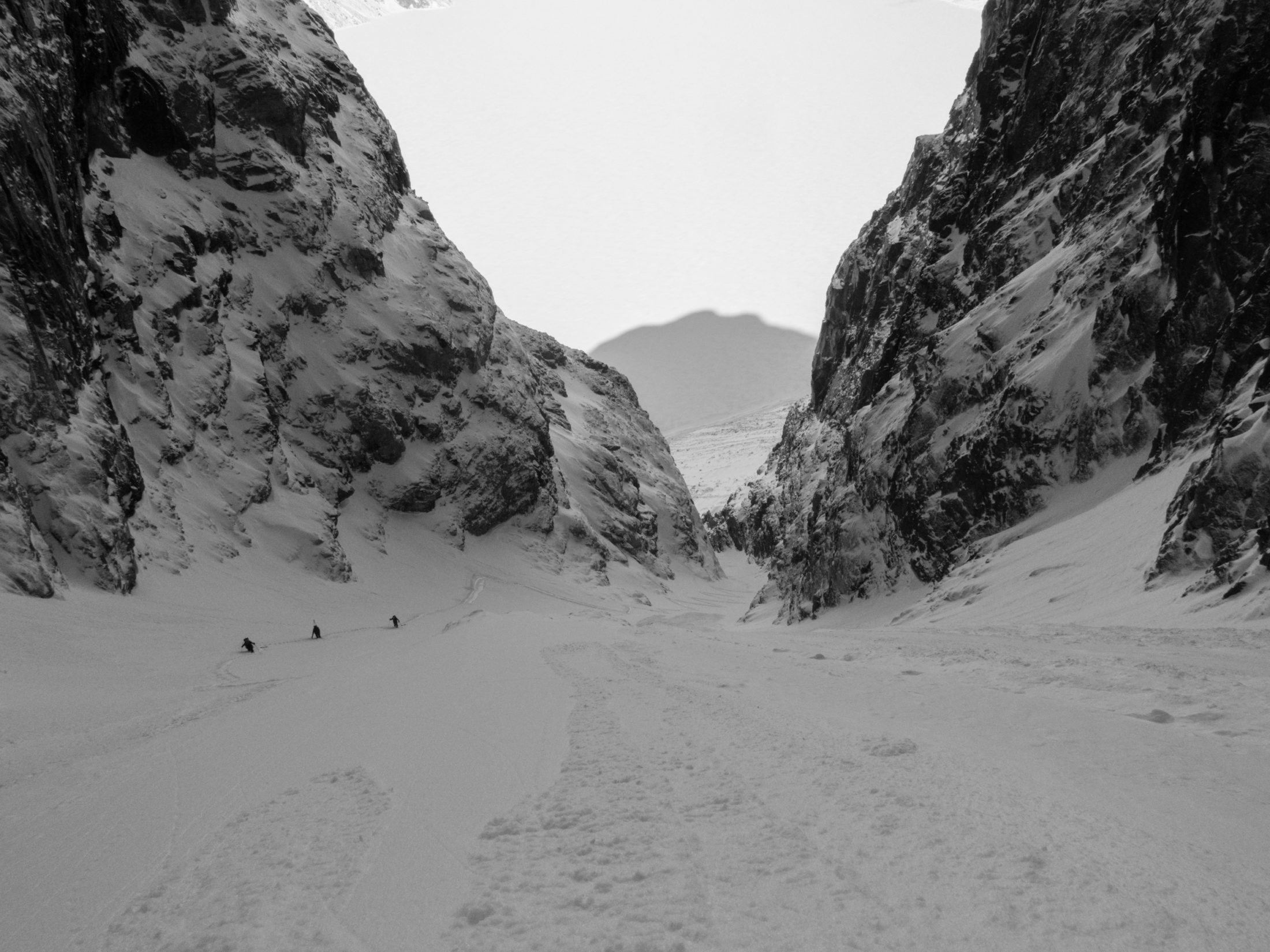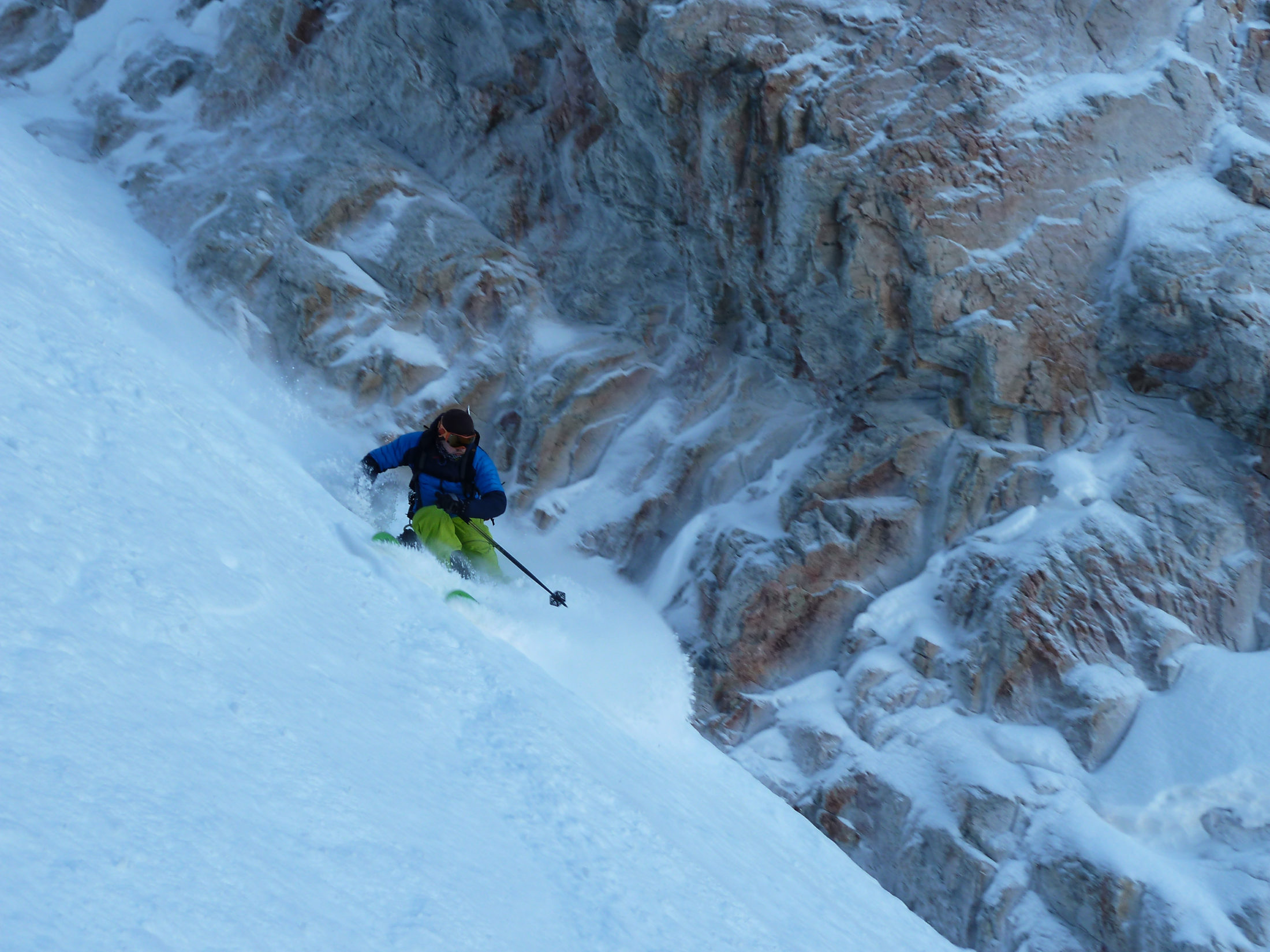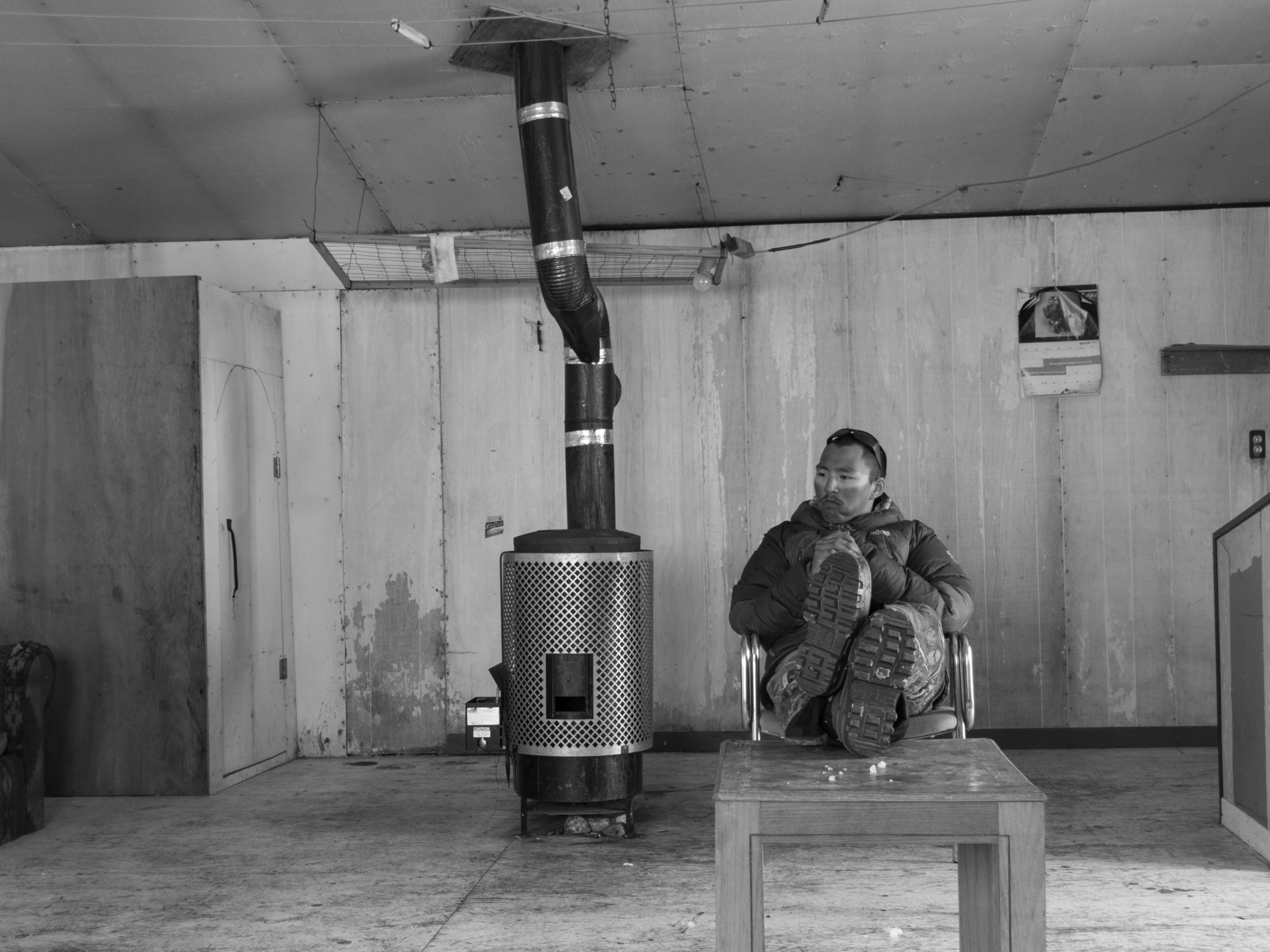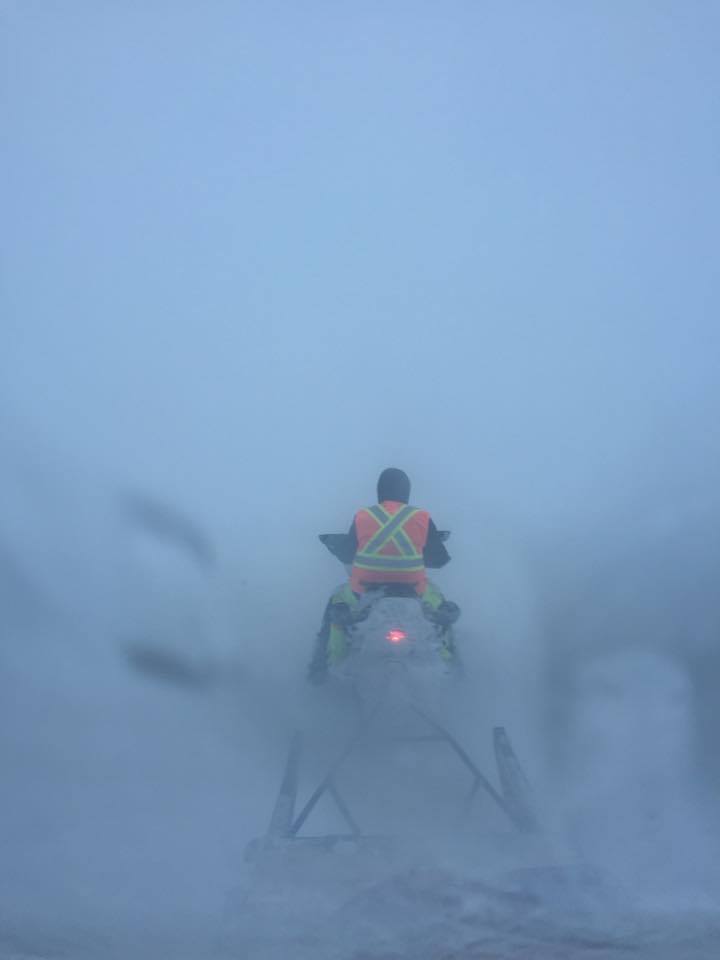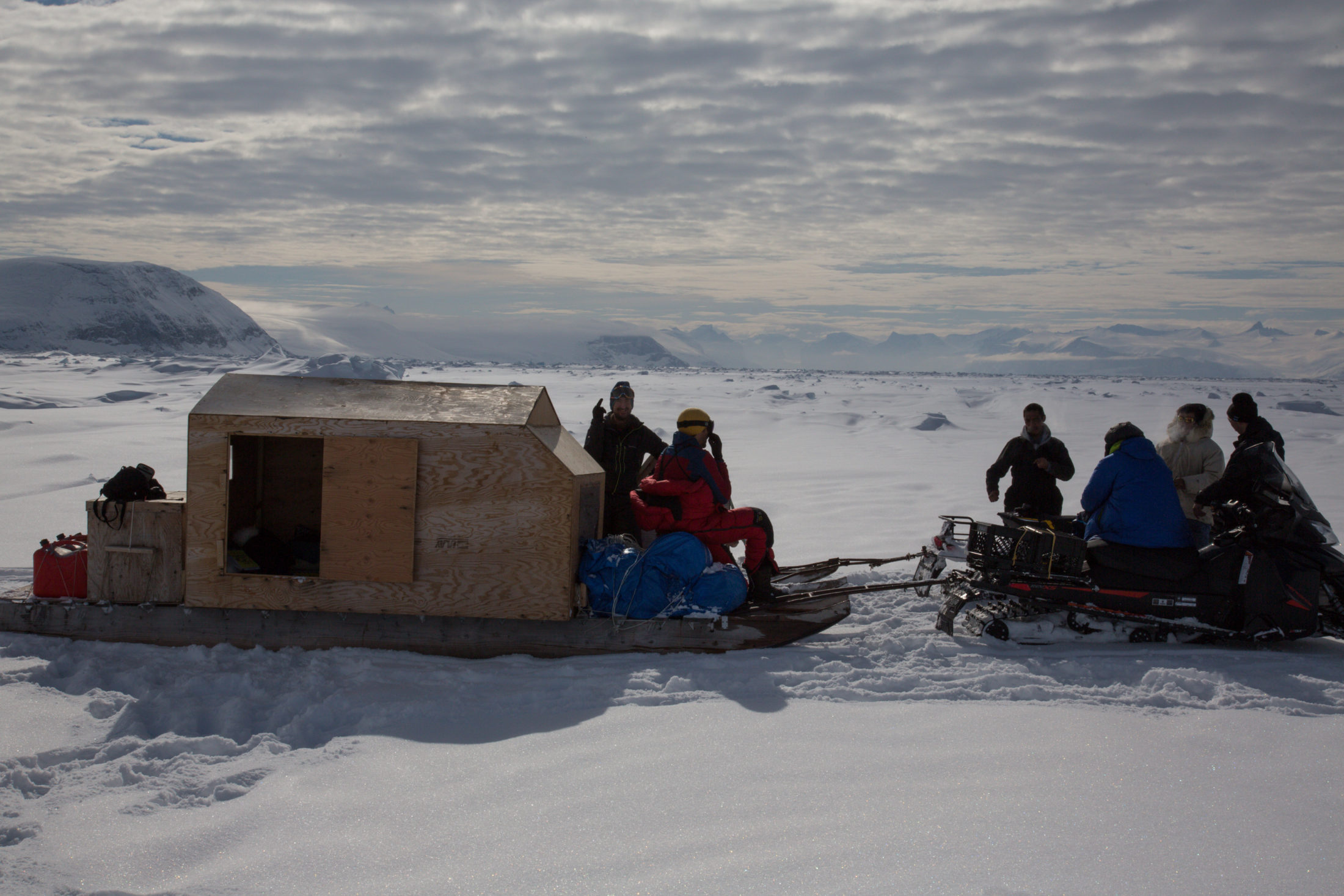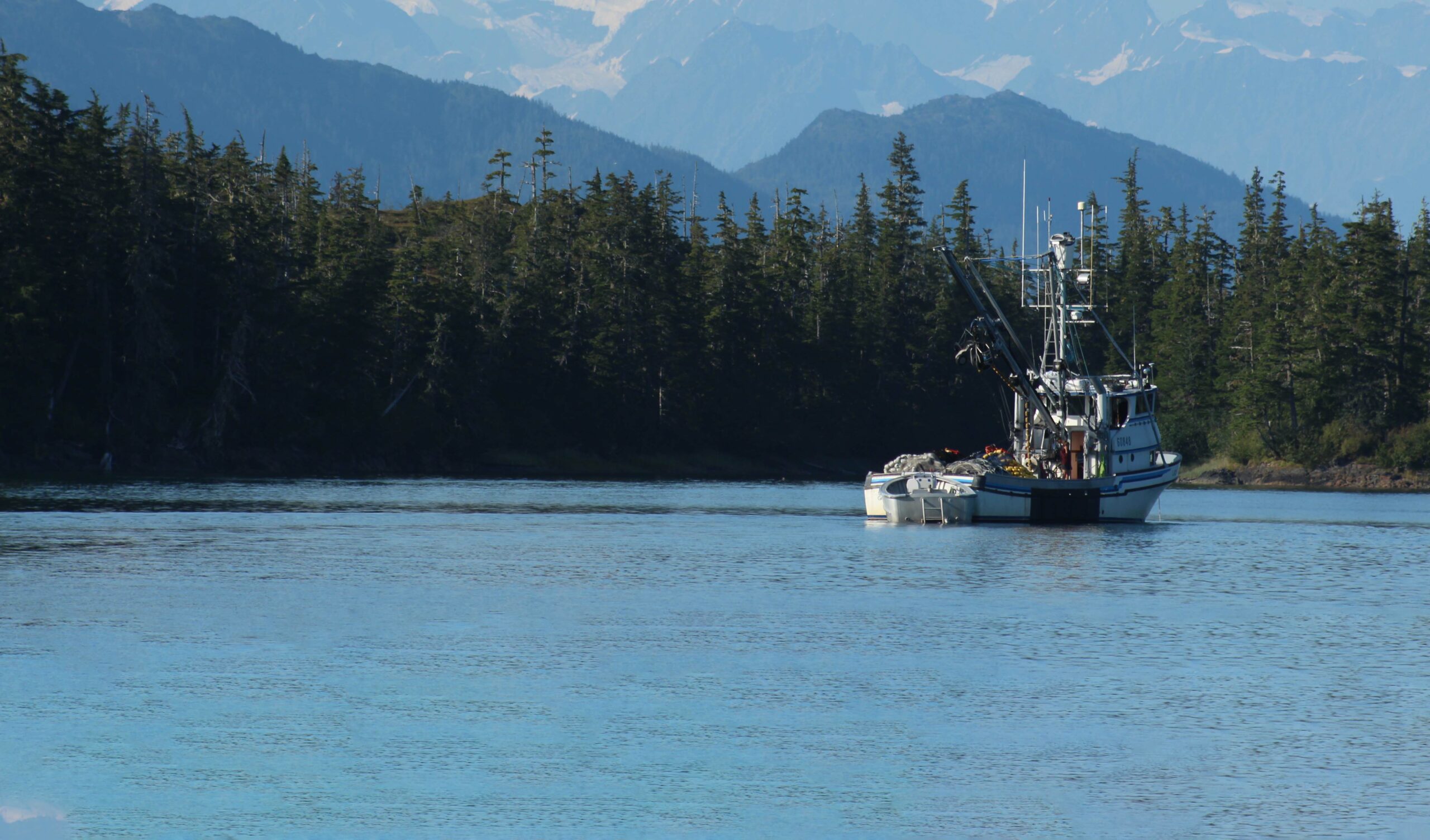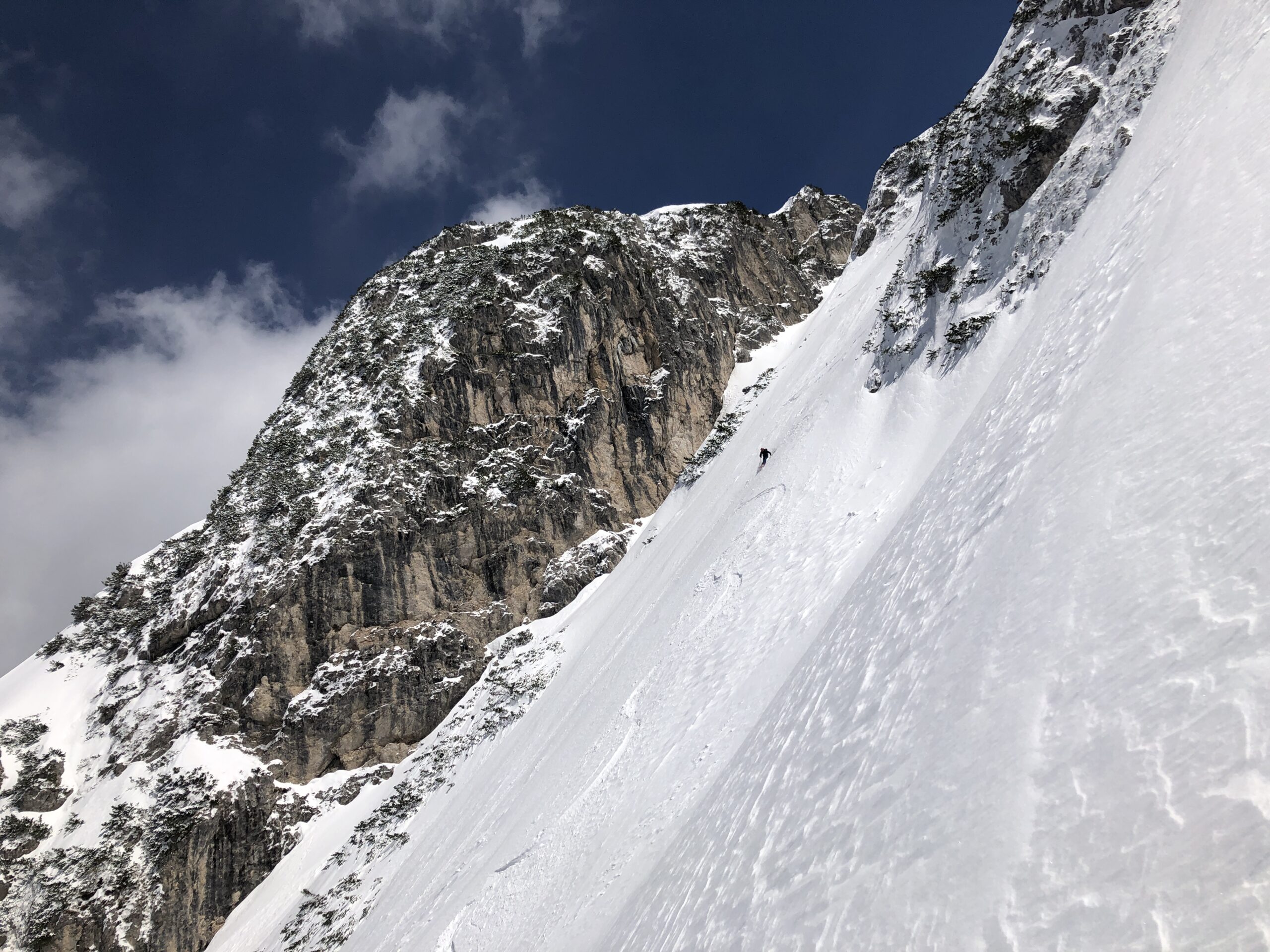In the spring of 2016 an all Scots team of Si Christy, Evan Cameron, Stephen Chipie Windross and Ross Hewitt travelled to Baffin Island in search of new lines to ski in the mythical fiord region. They skied 19 lines of which many were first descents… but while trying to get out of the fiords, they got a little more than they had bargained for…
About 12 hours into the journey to the fiords on snow machines our attention became occupied with the appearance of some amazing ski lines when all of a sudden we were startled by the presence of a polar be running alongside us, at 40 kph. It turned away soon enough but it then proceeded to climb a couloir at a startling pace. Hands on possession of our 2 guns would be a hot topic during our trip and it certainly made us rethink the tactic of leaving the weapons at the bottom of the couloirs while you climbed and skied them.
We drove deeper into the fiords and put some distance between the bear and us. By 11 pm we were deep within the 70 km long Gibbs Fiord when twin 1200 m lines appeared in front of us. That was the jackpot moment when all the research and hard work to get here paid off and any doubts about whether there would be anything worthwhile to ski faded away.
The next day an 1150 m bootpack in deep cold snow was a harsh warm up after days of travel but we were all excited as we stepped into our skis. The bed of the couloir sloped to the right that would take the slough away from you as you skied. With adrenaline flowing I headed off fast savouring the excitement of feeling and seeing the slough chasing at my heels in a race to sea ice below. The team regrouped on the fiord and everyone was buzzing with excitement and sporting big smiles. Never in our wildest dreams had we expected to find snow quality to allow that type of skiing in Baffin.
For 21 days we skied and kited in the fiords with exceptional snow conditions until our depleted bodies could do no more. I’d come to Baffin knowing I had to make the most of it and had skied myself to exhaustion. All I could think about was relaxing on a beach and drinking cold beer. However getting back to the settlement of Clyde River not go well…
On the agreed pick up day we waited patiently for the snow machines to arrive. Bad weather kept us in our sleeping bags and by evening we had given up hope for the day and settled down to sleep. At 1 am Evan woke me with ‘They’re here’. Sleepily, I pulled on my down gear and went outside to find there was just one snow machine that could only take 2 people. With the language barrier it took soon time to learn from our Inuit guide Kevin that the other machine had broken down somewhere, but it would come…sometime. This was not exactly reassuring as the Inuit have their own concept of time because when there is 24 hour daylight, one day extends unbroken into a whole summer.
There was no other option than leaving 2 people behind. It would take at least six days to ski out to the settlement even after abandoning thousands of dollars worth of equipment that wasn’t essential to survival. We drew straws for who would go, and who would remain. For those left behind it would now be tight to make the $2500 flights off Baffin and the international connections home afterwards. Chipie and Evan drew the short straws and after saying our farewells, Evan announced he was off back to bed, while Chipie took my hand, looked me in the eye and said ‘make sure someone comes for us’.
Kevin had already been driving over serious complex sea ice solo for 24 hours, which was a brave action perhaps indicative of the responsibility he felt to get us out. Surprisingly he declined the offer to sleep a few hours as he needed to get back to his young family. A momentarily lapse in concentration could be fatal with icy troughs and snow covered leads easily able to swallow the machine. Every hour we would stop and I’d share the last of our chocolate with him while he smoked and drank sugar laden coffee. During a stop our driver called home and learnt that the other driver had left Clyde River at 4 am, which meant that guys would only be 12 hours behind us now. The anxiety and guilt for leaving the other two behind started to dissipate slightly and give way to deep fatigue after only 2 hours sleep in 24 hours and 3 weeks of skiing around the clock. The journey was challenging with poor visibility and heavy reliance on GPS to navigate in the featureless sea ice and time and again we got stuck and had to back track. By the time we got to Clyde River, Kevin had been driving for 36 hours straight.
Our simple shack in Clyde River now seemed luxurious. We opened our duffel bags to find found our gear and sleeping bags drenched so got busy trying to dry everything. By 9 pm we were dead on our feet and more than ready to get some sleep when we heard that the other driver had set off his personal locator beacon 12 hours out of town. The anxiety and worry flooded back with a vengeance.
We spoke to the Search and Rescue team that had gathered and agreed that the missing driver was likely to be on his own as our guys had a satphone and would have called if something had changed. We couldn’t get through to our team on the phone but that was to be expected with the camp against a big wall. A 4-day blizzard was forecast and with the rescue team were focused on the missing driver so we faced the additional problem of how to get our guys back. They had 10 days of food and fuel to sit it out but they wouldn’t thank if we tested their survival endurance. We soon learnt that everyone we knew with a snow machine had major mechanical issues and the rest of town was heading south for a fishing festival that boasted a staggering $11800 fortune for first prize. Against that we didn’t stand a chance with what we could afford to pay. In my exhausted and sleep deprived mind I was thinking ‘fuck, fuck fuck, this is like Django, is this really happening?’
In Clyde the blizzard raged dumping a foot of snow overnight. We spent the time with the rescue team monitoring the wind speeds and praying for a lull that would enable them to travel. In evening of day 2 the wind dropped below 50 kph and the team set off knowing there were two huts on route they could shelter in. When they reach the first hut, just a few hours out of town, they are soaked and forced to overnight and dry out. Day 3 followed a similar pattern with the wind speed only dropping in the evening allowing the team to move forward up to the Sam Ford hut.
Meanwhile back out on the ice and unknown to everyone in Clyde, not one, but two Inuits had headed out on the other snow machine and successfully picked up Si and Evan. Then on the way back they had run out of fuel for some reason. In a misguided moment of desperation, one of the Inuits decided to pour the remaining 2 gallons of cooking fuel into the machine in the hope it would get it to the Sam Ford Fiord hut and the possibility of a radio and fuel. All that remained to melt snow, critical for survival, was the residual contents of the stove’s fuel bottles.
The seriousness of the situation had changed dramatically for everyone out there and to make matters worse, the satphone had stopped connecting to satellites and the lads had been unable to receive my messages and texts letting them know someone was coming as soon as the storm abated. Without comms and the storm still raging, the driver activated his personal locator beacon, alerting the authorities in Ottawa. Seeing the desperation of the situation, Chipie decided he and one driver should walk to the hut while the Evan and the second Inuit would remain at the break down site.
The next day they set out on the perilous walk with the wind-blown snow sitting on glaze ice and obscuring the dangerous leads in the ice. With poor visibility and driving snow hampering progress, their situation was about to get even more critical as the Inuit partially fell through one of the snow covered leads into freezing water. After hauling him out, Chipie led the way using his ski pole to test for hidden leads under the snow. In the blizzard he had difficulty stopping his goggles from icing over and took them off only to become snow blind. 16 hours later they made it to the hut and were eventually discovered there by the rescue team who also picked up Evan and the other Inuit shortly afterwards. After spending the night at the hut drying out and warming up, everyone returned to Clyde on day 4.
If I was to choose one positive from what was one of the most mentally challenging weeks of my life it would be how the Inuit of Clyde River opened up to us and extended their friendship while we shouldered the burden of worry waiting for news. Once the people of Clyde knew we were Scots, they were proud to tell us about their Scottish ancestry and adoption of Scottish surnames to reflect the positive relationship they had with the Scots during the whaling years of the early 1800s.
It really was a ‘trip’ in both senses of the word, mental and physical. The moment a polar bear ran along side the snow machine on the way in was the wake up call that the Baffin wilderness is remote, otherworldly, incredibly beautiful, harsh and totally unforgiving, with guaranteed solitude and adventure on offer…and it has been successfully inhabited and lived off by the Thule and Inuit for a thousand years.
The Scot have a saying ‘ all’s well that ends well’
Si Christy is a Courcheval based ski instructor specialising in off piste.
Stephen Chipie Windross is a lifelong ski bum based in Tignes and currently down south working for British Antarctic Survey.
Evan Cameron emigrated to Christchurch, New Zealand where he is a consultant emergency doctor and is always keen to offer assistance to Northern Hemisphere skiers coming to ski the Southern Alps.
Ross Hewitt is a lifelong Chamonix ski bum and Aspirant Mountain Guide.
Photos: team work

